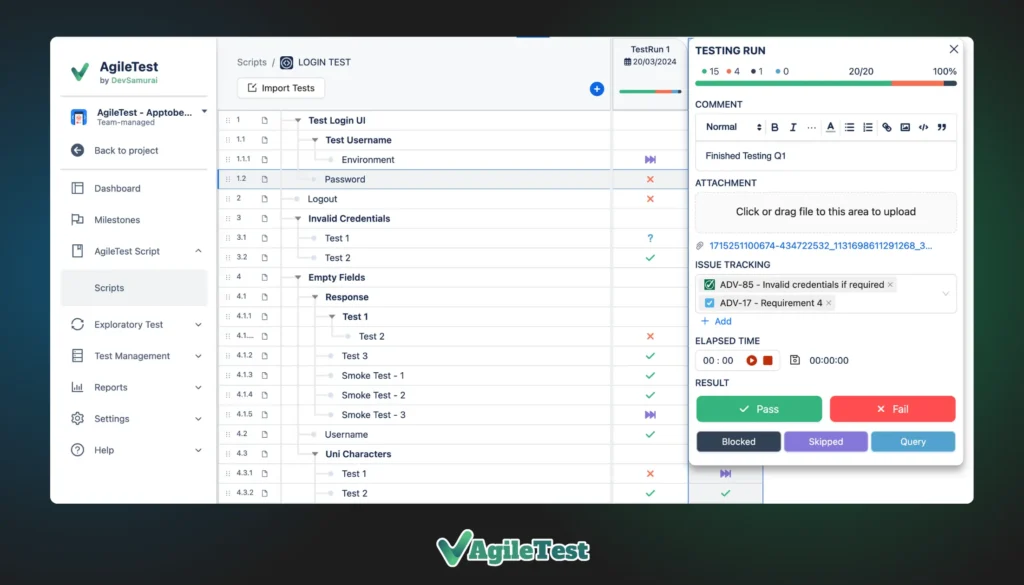Automated testing, in software development today
Software testing, in its past, really relied on manual processes with very few automated tools around. But times have changed, and today, automated testing is a must, especially with our tech world moving on a fast track. And just as development has been gearing up and customer expectations are getting higher and higher, automated solutions have been a “have-to” to stay ahead in terms of quality assurance.
1. What is automated testing?

Automated testing is a significant process for most modern software development. It means using different scripts and tools that imitate users’ steps—for example, clicks on the buttons and entering data. Automation guarantees that the software functions correctly, performs well, and remains reliable.
Automated testing forms the core of CI/CD pipelines. Automated tests run on new code to ensure that no bugs or disturbances are introduced during Continuous Integration. The code can automatically be deployed into production if the tests pass. These practices enable teams to keep their software in a constant state of readiness for deployment, allowing them to update customers quickly and with confidence.
→ Related Content: Guide to CI/CD Pipeline
Automating testing enables better streamlining of quality assurance efforts. This allows spending more time on those complicated characteristics, which improves the overall quality of the software.
2. Why It Is Important to Test Automatically
Automated Testing is essential for a number of reasons:
- Efficiency: It will save time as the tool will automate the repetitiveness in testing and allow teams to focus on other innovations and create value for the customers.
- Reliability: Automated tests make results consistent and repeatable, with little human error.
- Early Bug Detection: This makes feedback loops faster, allowing teams to find and correct problems early in the development process. It ensures early detection, thereby preventing expensive issues in the later phases of testing.
Automated testing is important in software quality and reliability that quickly changes the environment of development all over the world.
→ Related Content: 3 Big Questions of Software Automation Test
3. Automated Testing in Software Development Today
In the past, software testing relied heavily on manual processes with very few automated tools. However, times have changed, and today, automated testing is essential, especially with our tech world moving at a fast pace. As development speeds up and customer expectations rise, automated solutions have become crucial for staying ahead in quality assurance.
→ Read more: 10 Best Automated Testing Tools for Testers in 2025
4. Benefits of Automated Testing
There are many advantages to automated testing:
- Speed: The tests are executed very quickly and in a consistent way, so the speed of manual testing time is cut drastically.
- Accuracy: Automated tests follow exact steps and therefore ensure that human error is minimized.
- Coverage: Automation allows for thorough testing across various scenarios, including edge cases and regression testing.
- Fadaster Releases: Automated testing quickens the development process and leads to software being released earlier.
- CI/CD Integration: CI/CD pipelines perfectly integrate automated testing for constant testing, giving developers confidence in every change.
- Regression Testing: Involves the process of easily rerunning automated tests to ensure that changes to code do not introduce new issues.
- Scalability: Automation makes dealing with large and complex test suites quite effective, which is quite good for growing projects.
- Reusability: Automated tests can easily and effectively be repeated for various releases time after time.
5. Will Automated Testing Remove Manual Testing?
Before embarking on automated testing, it is important to understand what it can and cannot do. Automated testing does not replace manual testing.
- Myth: Automation replaces all manual testing.
- Reality: Automation eliminates the time taken in performing tedious activities, one of which is regression testing. However, many of the other aspects of manual testing are essential, for example, exploratory testing, usability assessments, and user acceptance testing. These classes of tests bring out the insights that automation cannot capture, thereby making manual testing a very crucial part of quality assurance.
Conclusion: Automated and manual testing complement each other. Automation, however, takes responsibility for repetitive actions, leaving manual testing in charge of the functional details to be tested for newer functionalities—such is the way a duo can create high-quality software.

→ Related Content: Manual Testing – Reduce Testing Time in Half
6. The Role of Automated Testing in CI/CD
Automated testing is, in fact, vital to maintaining product quality within a CI/CD environment. Thus, teams rely on automated tests for their introduced features to ensure that everything works correctly and nothing breaks. These tests run for each build, reduce manual effort, and catch problems early. Regular running of automated tests is also scheduled, particularly after new builds or changes in the code, for the purpose of ensuring application stability and reliability.
Even as automation plays a critical role in CI/CD pipelines, it is one important part of the complete Quality Assurance process. Most manual testing is still very much indispensable to attaining overall good software quality.
7. Challenges in Test Automation
While test automation offers many advantages, it also comes with its own set of challenges. Understanding these issues and knowing how to address them is crucial for maintaining an effective testing process.
Flaky Tests
One common challenge in automation is dealing with flaky tests, where tests sometimes pass and sometimes fail without any changes to the code. This inconsistency can make it difficult to trust your test results. Typically, flaky tests arise from timing issues, dependencies on external services, or unstable environments. To tackle this issue, you can implement retry logic, where tests are rerun a few times before being marked as failed. Additionally, improving test stability by minimizing dependencies and using better synchronization methods can help reduce these unpredictable failures.
Test Maintenance
The more complicated your application develops, the more difficult it is to maintain your automated test suites. Your tests may be impacted by updates, code modifications, and new features. Therefore, it’s essential to review and update your test cases on a regular basis to ensure their continued usefulness. This process involves removing outdated tests, updating existing tests, and adding new tests for recently added functionality. By keeping your test suite up to date, you can ensure that it is trustworthy and that it continues to enhance your development process.
→ Related Content: Test Cases, Test Steps and How to Implement AI
Scalability Issues
As your test suite expands, scalability becomes a significant concern. Large test suites can slow down the testing process, leading to delays in your development cycle. To manage this, you can use test parallelization, which allows multiple tests to run simultaneously, thereby reducing overall execution time. Furthermore, another effective approach is selective test execution, where only the most relevant tests are run based on recent code changes. These strategies help keep your test automation efficient and scalable as your project grows.
8. Conclusion
Automated testing enabled us to move from manual labor-intensive processes in software development into an integrated part of modern quality assurance. The rapidly pacing world of technology makes it essential to get software that is reliable, well-performing, and able to withstand the flood of customers.
Although automation is fantastic for monotonous tasks, human testing will never be obsolete simply because if a task requires the understanding of humans, we need to perform it ourselves, such as exploratory testing or user experience. This will allow you to have good quality in the software while having enough test cases for a reasonable effort of testing work. Add that with automated testing and manual efforts, you will be ready to develop top-notch software regarding quality, performance, or user experience. It will help you to strengthen your software development workflow and appeal to the challenges of today’s competitive market.
Try AgileTest out on Atlassian Marketplace → Link




